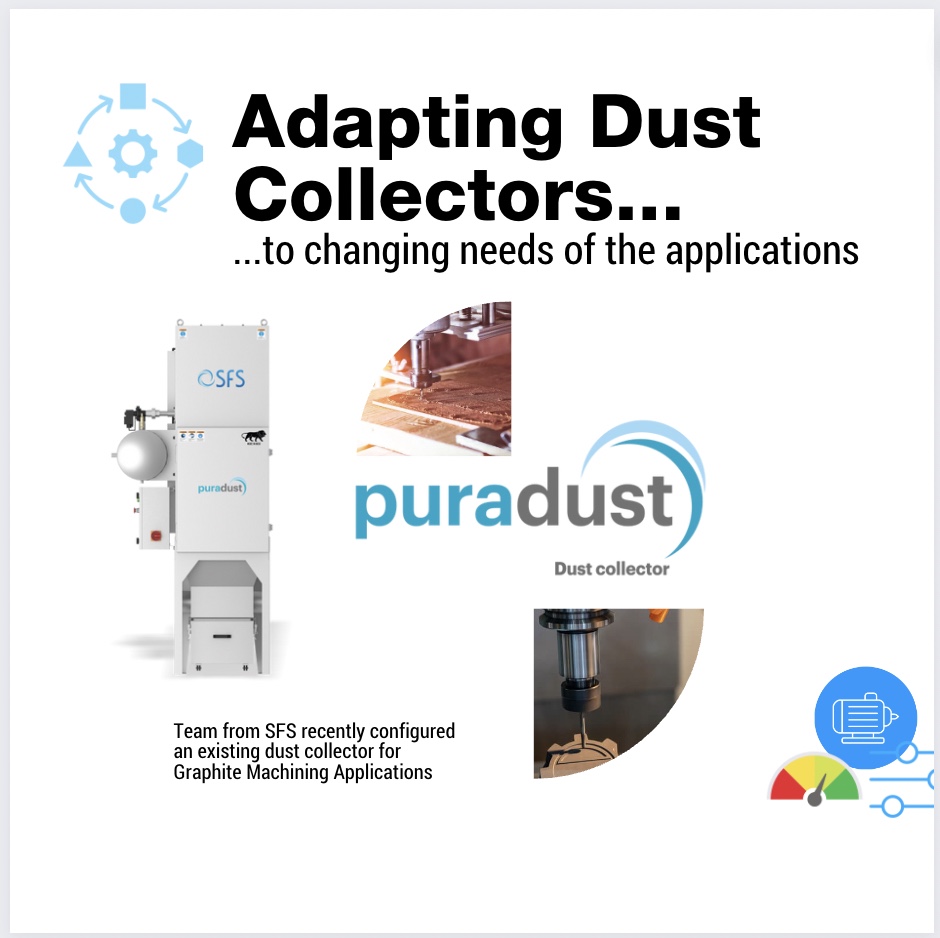In industrial settings, dust collectors play a vital role in maintaining clean and safe work environments. As processes and technologies evolve, the requirements for these essential systems also change. This article explores the common need for modifications in dust collectors and how solutions can be evolved to meet the evolving demands.

Want to use an existing Dust Collector for new or modified application
New applications often demand different levels of filtration, increased efficiency, or specialized features from dust collectors. Industries could face stricter environmental regulations and specific industry standards, requiring dust collectors to upgrade their filtration efficiency. Moreover, varying dust loads may necessitate adjustments in the collector’s capacity to ensure optimal performance. Additionally, size and footprint modifications are considered to accommodate space constraints or optimize installation. Energy efficiency and maintenance accessibility are other factors that influence the requirement for change.
Dust Collector Modification Considerations
To meet the changing requirements, dust collector solutions can be modified or configured through several means.
- Advanced filtration could be required depending on dust particle size to ensure high-efficiency particle capture.
- Intelligent controls and smart control systems can be introduced to enhance the overall performance and reliability of dust collectors.
- Modular design approaches allow for easy customization, upgrades, or reconfiguration based on specific needs.
- Energy optimization techniques, such as the incorporation of variable speed drives or optimized fan designs, help reduce energy consumption and minimize operational costs.
- Integration with the Internet of Things (IoT) allows for data analysis, optimization, and seamless integration with other systems, bringing advanced capabilities to dust collectors.
While using existing dust collector for new applications has its own pro’s and cons, the best leverage can be gained by their careful considerations. Typically, Dust Collector can be easily reconfigured for relatively similar types of applications. For instance, a dust collector used for dry grinding can be easily configured for other grinding stations or super finishing operations.
Recently, SFS received a similar requirement from a leading OEM. One of their machines along with dust collector was brought by a Govt. owned tool room dedicated to a leading industrial cluster. The machine was initially brought to serve machining application in mould manufacturing. However, later, it was decided that the machine would be deployed for graphite machining. This required significant changes in configuration of the dust collector – starting from dust capture mechanism to suction speeds and maintenance checklists. The team from SFS helped to client to reconfigure the dust collector for graphite machining applications by taking complete ownership. The required modifications were conducted by the team and the Dust Collector was installed and commissioned at the new location. The client called in to express satisfaction and praise for the SFS team on successful adaptation of dust collector for the new graphite machining requirement. As a result, client was able to save significant capital expenditure and avoid redundancy.
If you have a modification requirement for dust collectors, mist collectors, fume extractors or any other air filtration system from SFS, get in touch with us at cleanair@sfspl.co.in

